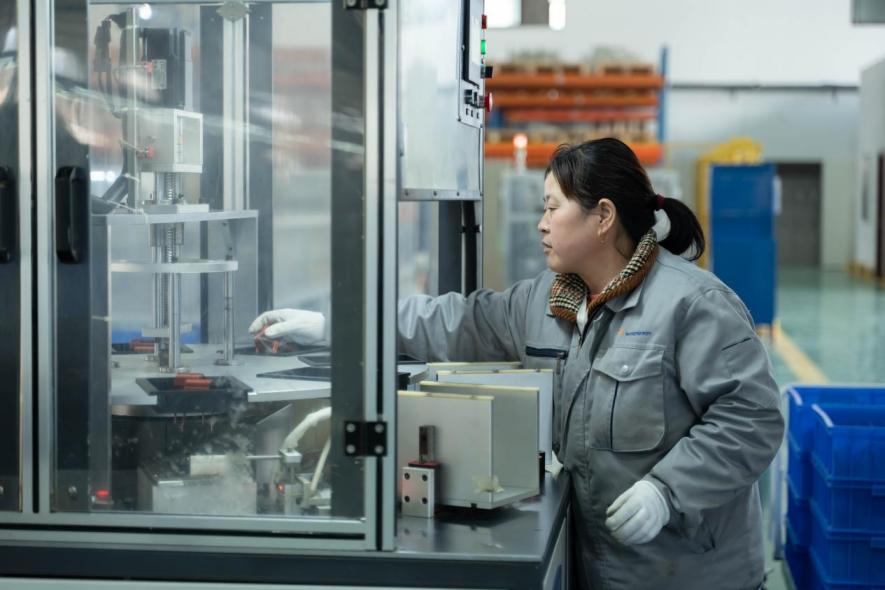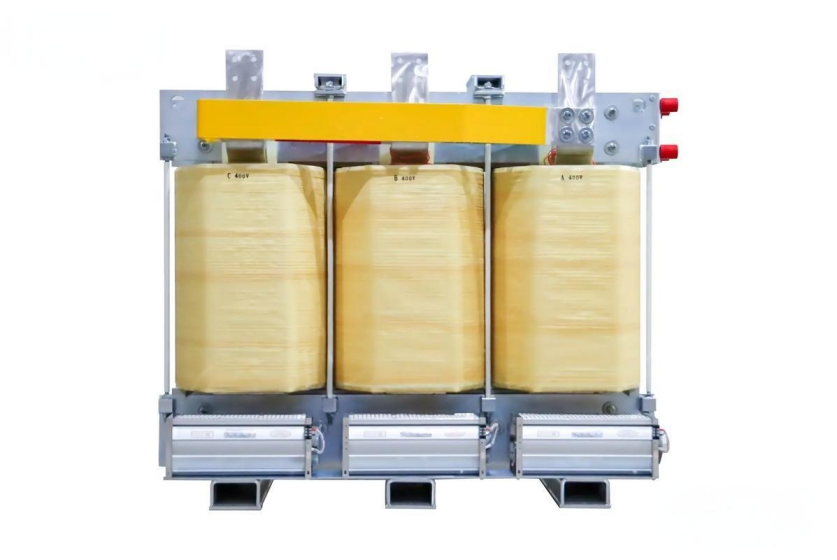Variable Frequency Transformer is a sophisticated device that relies on high-quality metals to ensure efficient power transmission and reliable operation. From copper windings to silicon steel cores, these metals play integral roles in the performance and longevity of Variable Frequency Transformers, making them indispensable components in modern energy systems.
Introduction to Variable Frequency Transformers
1. Understanding Variable Frequency Transformers
Variable Frequency Transformers (VFTs) are innovative devices designed to control the frequency and voltage of alternating current (AC) power systems. Unlike traditional transformers, which maintain a fixed ratio between input and output voltage, VFTs offer the flexibility to adjust the frequency and voltage levels as per requirements. This adaptability makes them invaluable in various industrial and commercial applications.
2. How VFTs Work
At their core, VFTs employ advanced power electronics and control algorithms to modify the frequency and voltage of AC power. They consist of input and output converters, which can adjust the frequency and voltage independently. By altering these parameters, VFTs can match the characteristics of the input power to the requirements of the load, ensuring optimal performance and efficiency.
Design and Engineering Considerations for Variable Frequency Transformers
1. Design Principles and Components
1.1 Converter Topologies: Different converter topologies, such as voltage source converters (VSCs) or current source converters (CSCs), offer distinct advantages in terms of performance and efficiency.
1.2 Control Algorithms: Advanced control algorithms optimize the operation of VFTs, ensuring accurate frequency and voltage regulation under varying load conditions.
2. Selection Factors for VFTs
2.1 Load Characteristics: Understanding the characteristics of the load is crucial for selecting the appropriate VFT configuration and rating.
2.2 Environmental Conditions: Factors such as temperature, humidity, and altitude influence the design and cooling requirements of VFTs.
3. Engineering Challenges and Solutions
3.1 Voltage and Frequency Range: Designing VFTs capable of operating over a wide range of voltage and frequency requires careful consideration of component ratings and cooling capacity.
3.2 Sizing and Cooling: Proper sizing of components and efficient cooling mechanisms are essential to ensure the reliable operation and longevity of VFTs.
4. Protection Mechanisms
4.1 Overcurrent Protection: Implementing robust overcurrent protection schemes safeguards VFTs against short circuits and overloads.
4.2 Voltage Regulation: Automatic voltage regulation mechanisms maintain the output voltage within predefined limits, preventing damage to connected equipment.
Variable Frequency Transformers in Renewable Energy Integration
1. Facilitating Renewable Energy Integration
Variable Frequency Transformers (VFTs) play a crucial role in integrating variable renewable energy sources, such as wind and solar, into the grid. These energy sources often produce power at varying frequencies and voltages, posing challenges to grid stability and reliability. VFTs address these challenges by converting the variable output of renewable energy systems to match the frequency and voltage of the grid, ensuring seamless integration and efficient power transmission.
2. Addressing Frequency and Voltage Variations
One of the primary challenges in integrating renewable energy into the grid is the variability of frequency and voltage from these sources. VFTs mitigate these variations by adjusting the frequency and voltage of the renewable energy output to match the grid’s requirements. This ensures consistent power quality and stability, minimizing the risk of disruptions and maximizing the utilization of renewable energy resources.

3. Case Studies in Renewable Energy Projects
In renewable energy projects worldwide, VFTs have proven to be indispensable for ensuring reliable grid integration. For example, in a wind farm project in Europe, Shinenergy’s VFTs were deployed to synchronize the variable output of wind turbines with the grid frequency, enabling efficient power transmission and grid stability. Similarly, in solar power plants in Asia, VFTs have been utilized to regulate the voltage and frequency of solar inverters, ensuring smooth integration with the grid.
4. Future Trends and Innovations
Looking ahead, the future of VFTs in renewable energy integration looks promising. Ongoing research and development efforts are focused on enhancing the efficiency and performance of VFTs, as well as reducing their cost and footprint. Innovations such as advanced control algorithms, modular designs, and grid-friendly features are expected to further improve the reliability and effectiveness of VFTs in integrating renewable energy into the grid.
Applications of Variable Frequency Transformers in Industry
1. Crucial Role in Industrial Applications
In addition to renewable energy integration, VFTs play a crucial role in various industrial applications. From motor control to variable speed drives and frequency conversion, VFTs enable precise control and optimization of power delivery in industrial processes. By adjusting the frequency and voltage of AC power, VFTs improve energy efficiency, process control, and equipment lifespan in industrial settings.
2. Improving Energy Efficiency and Process Control
In industries such as manufacturing, mining, and oil and gas, VFTs are instrumental in optimizing energy usage and enhancing process efficiency. By controlling the speed of motors and drives, VFTs enable energy savings and improve the performance of industrial machinery. Moreover, VFTs provide accurate frequency conversion capabilities, allowing for seamless integration of equipment with different power requirements.
3. Case Studies in Industrial Sectors
Numerous case studies demonstrate the effectiveness of VFTs in industrial settings. For instance, in a steel manufacturing plant, Shinenergy’s VFTs were deployed to regulate the speed of electric motors, resulting in significant energy savings and improved process efficiency. Similarly, in a wastewater treatment facility, VFTs were used to control the frequency of pumps, optimizing their operation and reducing maintenance costs.
4. Considerations for Selecting and Integrating VFTs
When selecting and integrating VFTs into industrial systems, several factors must be considered. These include the specific requirements of the application, such as load characteristics and operating conditions, as well as the reliability and performance of the VFTs. Collaboration with experienced manufacturers like Shinenergy is essential to ensure the successful implementation of VFTs in industrial environments.
The Future of Variable Frequency Transformers: Trends and Innovations
1. Emerging Trends in VFT Technology
The future of VFTs is characterized by emerging trends and innovations aimed at enhancing their performance and capabilities. Advanced control algorithms, modular designs, and enhanced cooling systems are among the key trends driving the evolution of VFT technology. These innovations enable VFTs to meet the growing demand for flexible, efficient, and reliable power conversion solutions in diverse applications.

2. Research and Development Efforts
Research and development efforts in the field of VFTs are focused on improving their efficiency, reliability, and cost-effectiveness. Innovations such as wide-bandgap semiconductors, advanced materials, and integrated power electronics are expected to further enhance the performance and capabilities of VFTs. Additionally, collaborative efforts between industry stakeholders, research institutions, and government agencies are driving innovation and accelerating the adoption of VFTs in various sectors.
3. Potential Applications in Emerging Fields
In addition to traditional applications, VFTs hold promise for emerging fields such as electric vehicles, smart grids, and microgrids. In electric vehicles, VFTs can be used for onboard charging and energy management, enabling fast charging and efficient power distribution. In smart grids and microgrids, VFTs play a vital role in balancing supply and demand, optimizing energy usage, and ensuring grid stability.
4. Predictions for Adoption and Evolution
As the demand for flexible, efficient, and sustainable power solutions continues to grow, the adoption of VFTs is expected to increase across various industries and applications. With ongoing advancements in technology and increasing awareness of the benefits of VFTs, they are poised to become indispensable components of modern energy systems. Manufacturers like Shinenergy are at the forefront of this evolution, driving innovation and shaping the future of VFTs in the energy industry.
Conclusion
Variable Frequency Transformers represent a significant advancement in power system technology, offering unparalleled flexibility, efficiency, and reliability. With their ability to adapt to changing load conditions and support the integration of renewable energy sources, VFTs play a vital role in shaping the future of power distribution and grid modernization. As manufacturers like Shinenergy continue to innovate and refine VFT technology, we can expect even greater advancements in power quality, efficiency, and sustainability.

